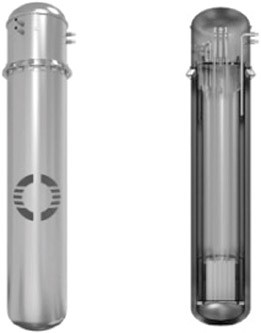The information in this prospectus is not complete and may be changed. We may not sell these securities until the registration statement filed with the Securities and Exchange Commission is effective. This prospectus is not an offer to sell these securities and it is not soliciting an offer to buy these securities in any state where the offer or sale is not permitted.
Subject to Completion, dated June 20, 2024
PRELIMINARY PROSPECTUS

62,440,080 Shares of Common Stock
This prospectus relates to the offer and sale from time to time by the selling securityholders named in this prospectus (the “Selling Holders”), or their permitted transferees, of up to 62,440,080 shares of our Class A Common Stock, $0.0001 par value (“Common Stock”) of Oklo Inc. (formerly known as AltC Acquisition Corp.) (the “Company”), consisting of (a) 40,940,778 shares of Common Stock issued to the Selling Holders in exchange for outstanding shares of Legacy Oklo Common Stock (as defined below) in connection with the closing of the Business Combination (as defined herein) (the “Closing”) at an equity consideration value of $10.00 per share by certain of the Selling Holders named in this prospectus; (b) 1,450,000 shares of Common Stock issued to AltC Sponsor LLC (“Sponsor”) that were originally purchased at a price of $10.00 per share in connection with the Company’s Initial Public Offering (the “Company IPO”); (c) 12,500,000 shares of Common Stock issued to Sponsor that were originally purchased at a price of $0.0006 per share in connection with the Company’s IPO; and (d) 7,549,302 shares of Common Stock (the “Earnout Shares”), issuable to certain of the Selling Holders upon the satisfaction of certain price targets, which are based upon (A) the closing sale price of one share of Common Stock as quoted on the New York Stock Exchange (“NYSE”) or the exchange on which the shares of Common Stock are then traded, for any twenty trading days within any sixty consecutive trading day period within the five-year period following the Closing or (B) if the Company undergoes a Change in Control (as defined herein), the price per share received by stockholders of the Company in such Change in Control transaction.
We are registering the securities for resale pursuant to the Selling Holders’ registration rights under certain agreements between us and the Selling Holders, as applicable to each Selling Holder. Our registration of the securities covered by this prospectus does not mean that the Selling Holders will offer or sell any of the securities. The Selling Holders may offer, sell or distribute all or a portion of their shares of Common Stock publicly or through private transactions at prevailing market prices or at negotiated prices. We will not receive any of the proceeds from any resale of the Common Stock being offered for resale in this prospectus (the “Resale Securities”).
We provide more information about how the Selling Holders may sell their securities in the section of this prospectus entitled “Plan of Distribution.” We have agreed to bear all of the expenses incurred in connection with the registration of these securities. The Selling Holders will pay or assume underwriting fees, discounts and commissions or similar charges, if any, incurred in the sale of securities by them.
We may amend or supplement this prospectus from time to time by filing amendments or supplements as required.
Our Common Stock is listed on the NYSE under the symbol “OKLO.” On June 18, 2024, the closing price of Common Stock was $9.89 per share.


